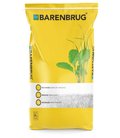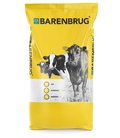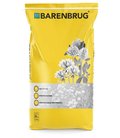Are you looking for quality forage for your cow/calf operation during the winter months? Do you farm in Florida, any of the surrounding states, all the way up through the Piedmont range and on to Missouri and Louisiana? Dr. Ken Quesenberry, Professor, Forage & Turf Breeding at the University of Florida in Gainesville may have the answer for you.
Dr. Quesenberry has been working with red clover since 1980. He says, “We needed something our cattlemen could feed in winter when our southern grasses go dormant. We can’t rely on hay from our warm season grasses because of the frequent thundershowers and high humidity.” With that in mind, Quesenberry started looking for options for planting a winter annual pasture. Legumes are an excellent crop to consider because of their nitrogen fixing qualities. They are a crop that can be grown that reduces fertilization costs for the other crops. Crimson clover was one option. It grew well but didn’t produce up to desired levels. Nutritional value is also important to the cows in a cow/calf operation. Quesenberry states, “The mother cows need quality food during lactation. Not only is it important for the calves to be fed well, but it’s imperative that the cows breed again for the next cycle.” In order for that whole process to work at its best, having a good crop of legumes with or without cool-season grasses would be a big help.
Quesenberry started a selection process looking for a clover that would grow in the South and still survive in cooler weather. He was looking for a nonmid-dormant type that would supply the needs of Florida farmers. After numerous selections over the years, he has discovered a variety meeting his goals. The variety is Barduro and it is now available on the market. Quesenberry reports, “Barduro is also drought tolerant and is resistant to root knot nematodes in our greenhouse trials.” Researchers and cooperating growers in neighboring states have seen good results well beyond the Florida borders. It should perform well in Kentucky, Tennessee, Missouri, Louisiana, Georgia and up along the Piedmont range. In one trial at the Auburn Extension Research Center in Crossville, Alabama – during the worst drought in 25 years – Barduro was the only experimental clover to survive. It survived the following year as well, and the drought had become the worst recorded in 100 years.
Quesenberry reports that Barduro really has an advantage in early season productivity. He adds, “Putting it into a grass pasture mixture is one way to use it. It works well in fescue/warm season rotations.” It has been competitive in stands of fescue, orchardgrass and bermudagrass. Barduro provides excellent hay production, even in Florida during the dryer seasons of April and May. It is well-suited for grazing.
John Andrae, Extension Agronomist, Forages at Clemson University has been very happy with the Barduro production this summer. He has done demonstration plot work on a couple of different farms. It was drill seeded at 4-6 pounds per acre into existing tall fescue plots. He says the red clovers have been under utilized in his area. According to Andrae, “Barduro provides a real benefit in summer production. It really helped us in the tall fescue stands.” From his experience, he feels it will do well along the coastal plains into the foothills of the Blue Ridge. While red clover is generally considered an annual in this area, Andrae states, “It looks like we might get two years out of it.” Though normal seeding is October into November, Andrae says, “Frost seeding in January into late February, early March may be the most dependable time.”
Another use for Barduro is for wildlife food plots. Houston Therrell is an extension service director for Mississippi State, headquartered in Brandon. His specialties include wildlife and fisheries management. Two years ago he did sideby-side trials with 15 to 20 different crop varieties near the extension office. He worked with straight stands and various mixes. Therrell states, “The Barduro did surprisingly well in growth and longevity. Even with our extreme heat and humidity, it held up very well.” Food plots for deer probably average one-quarter to one acre in size; some can be 10 to 20 acres. Therrell recommends seeding at 10 to 15 pounds per acre for mono-stands with a minimum of 2 to 3 pounds in mixtures of several varieties. Seeding time depends on air and soil temperatures along with expected freeze dates. He says, “It’s probably best to shoot for the last of September through the first part of October. While this clover is extremely competitive and does well with other varieties, I really like it as a sole crop because of its increased protein and premium digestibility which provides good weight gain.” Though red clover is considered an annual in some areas, Therrell says, “If properly maintained, we can expect to get several seasons out of Barduro.” If Barduro works this well for deer in wildlife food plots, it should do just as well for livestock purposes.
Quesenberry says, “Fall is an ideal seeding time from Florida to Central Kentucky and Central Missouri, probably any time in October. In northern Alabama to the Piedmont zone, mid-October into November is good.” The key is to wait until the weather cools a little so that the cooling rains will get it off to a good start. In northern climates, spring is also an option. Quesenberry recommends seeding at 10-12 pounds per acre in a mono-stand. Barduro can be seeded at 8 pounds per acre in mixed grass pastures.
Barduro may be your ticket if you want your cows in the clover.





